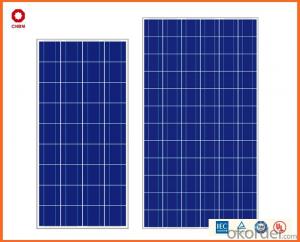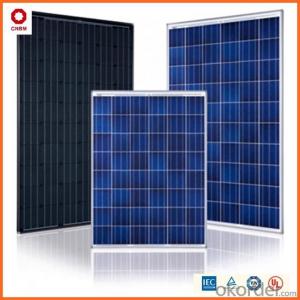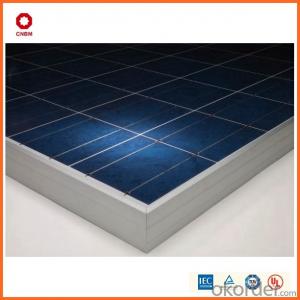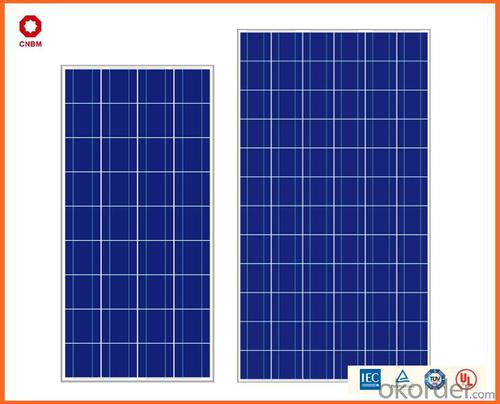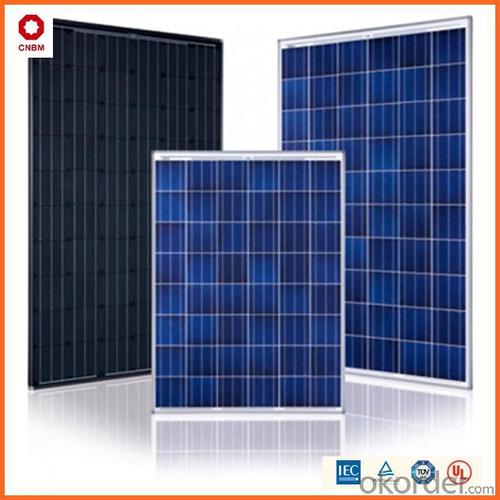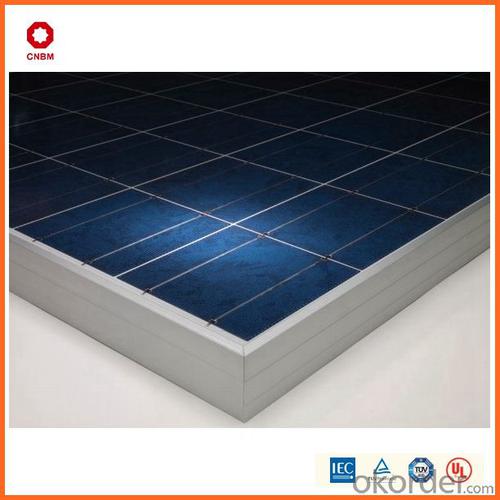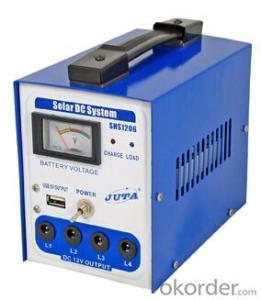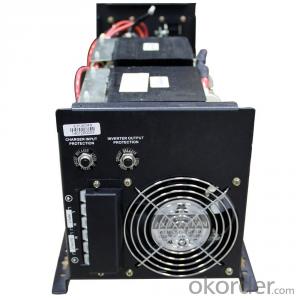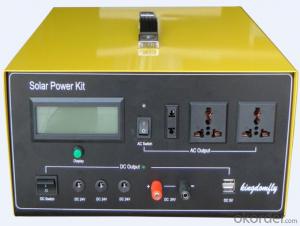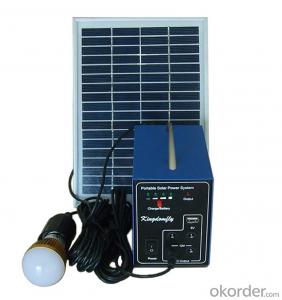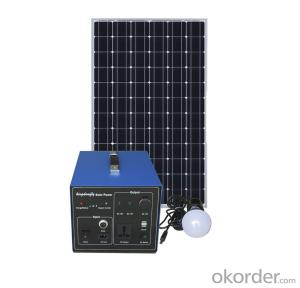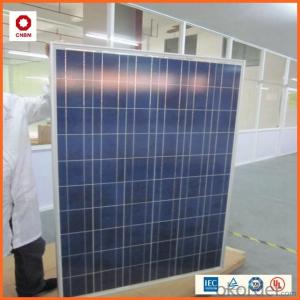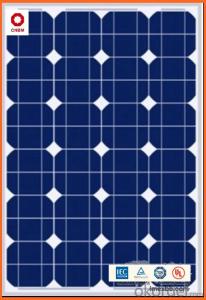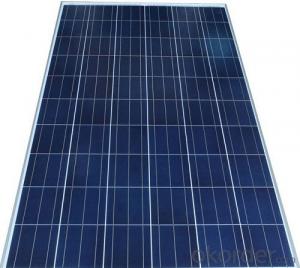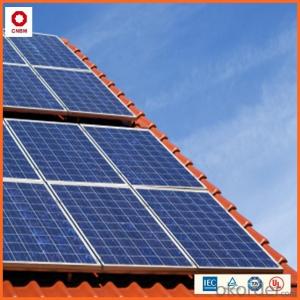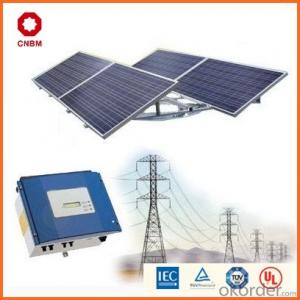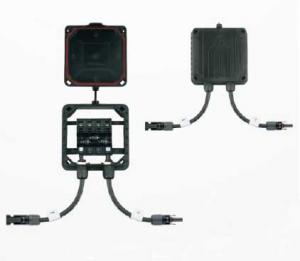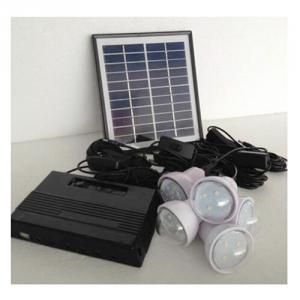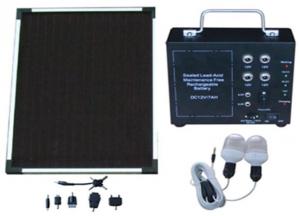Photovoltaic Solar Energy Systems - Hot Sale 35W Small Solar Panel with Good Quality
- Loading Port:
- China main port
- Payment Terms:
- TT OR LC
- Min Order Qty:
- 11 watt
- Supply Capability:
- 10000000 watt/month
OKorder Service Pledge
OKorder Financial Service
You Might Also Like
Product Description:
Hot Sale !!! Quality and Safety of Small Poly Solar Panel 35~85w
1. Rigorous quality control meets the highest international standards.
2. High-transmissivity low-iron tempered glass, strong aluminium frame.
3. Using UV-resistant silicon.
4. IS09001/14001/CE/TUV/UL
Warranties of Small Poly Solar Panel 35~85w
1. 10 years limited product warranty
2. 15 years at 90% of the minimal rated power output
3. 25 years at 80% of the minimal rated power output
Technical date of 45w-85w Poly Solar Panel
ITEM NO.: | Mono 125*125 cell ,36pcs . Power range from 80Wp-100Wp | ||||||||
Maximum Power(W) | 80 | 85 | 90 | 95 | 100 | ||||
Optimum Power Voltage(Vmp) | 17.81 | 17.89 | 17.94 | 17.99 | 18.06 | ||||
Optimum Operatige Current(Imp) | 4.78 | 4.91 | 5.12 | 5.35 | 5.59 | ||||
Open Circuit Voltage(Voc) | 21.98 | 22.05 | 22.14 | 22.28 | 22.45 | ||||
Short Circuit Current(Isc) | 4.95 | 5.15 | 5.36 | 5.65 | 5.84 | ||||
Solar Cell: | 125*125 Mono | ||||||||
Number of Cell(pcs) | 4*9 | ||||||||
Brand Name of Solar Cells | JA Cell, Bluesun Cell | ||||||||
Size of Module(mm) | 1580*808*35 | ||||||||
Caple & Connector Type | Pass the TUV Certificate | ||||||||
Frame(Material Corners,etc.) | Aluminium-alloy | ||||||||
Backing (Brand Type) | TPT | ||||||||
Cell Efficiency for 100W(%) | 15.8% | ||||||||
Weight Per Piece(KG) | 12.0KG | ||||||||
FF (%) | 70-76% | ||||||||
Junction Box Type | Pass the TUV Certificate | ||||||||
Tolerance Wattage(e.g.+/-5%) | ±3%, or 0-3% | ||||||||
Front Glass Thikness(mm) | 3.2 | ||||||||
Temperature Coefficients of Isc(%) | +0.04 | ||||||||
Temperature Coefficients of Voc(%) | -0.38 | ||||||||
Temperature Coefficients of Pm(%) | -0.47 | ||||||||
Temperature Coefficients of Im(%) | +0.04 | ||||||||
Temperature Coefficients of Vm(%) | -0.38 | ||||||||
Temperature Range | -40°C to +85°C | ||||||||
Surface Maximum Load Capacity | 2400Pa | ||||||||
Allowable Hail Load | 23m/s ,7.53g | ||||||||
Bypass Diode Rating(A) | 12 | ||||||||
Warranty | 90% of 10 years,80% of 25 years. | ||||||||
Standard Test Conditions | AM1.5 1000W/ 25 +/-2°C | ||||||||
Packing | carton or pallet | ||||||||
1*20' | 25 Pallets / 450pcs | ||||||||
1*40'STD | 25 Pallets / 100pcs | ||||||||
Features of our products:
• High conversion efficiency mono/poly-crystalline amorphous silicon solar cells
• Modules incorporate high performance bypass diodes to minimize the power drop caused by shading
• High transmittance, low-iron tempered glass
• High performance EVA encapsulant to prevent destroying and water.
• AI frame: without screw, corner connection. 8 holes on the frame can be installed easily
• Good performance of preventing from atrocious weather such as wind and hails
• Certifications: CE IEC TUV VDE UL, Class I
• 10 years 90% power output warranty
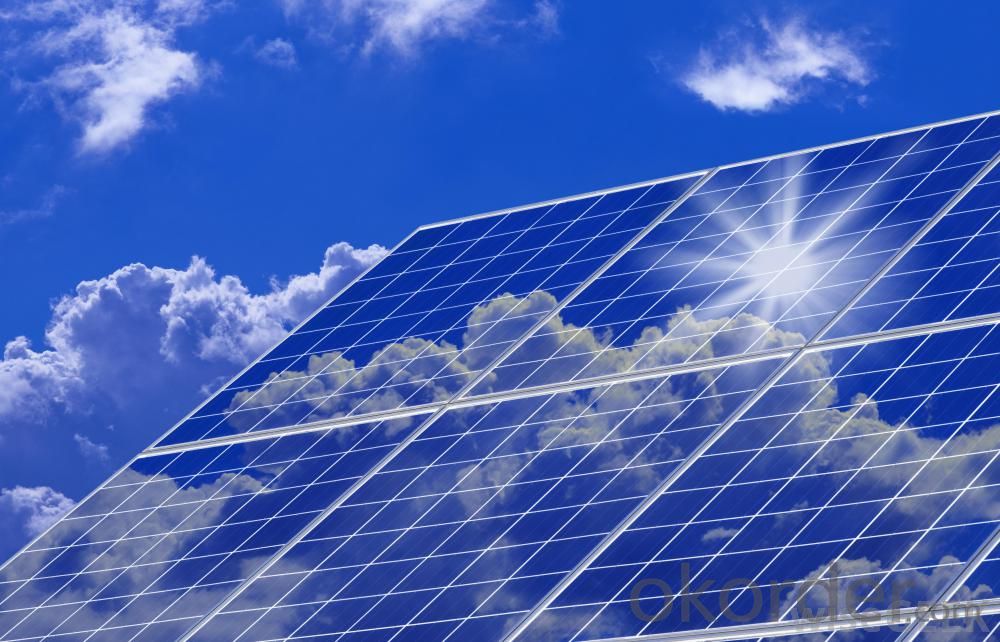
Shipping of Small Poly Solar Panel 35~85w
By Sea | Delivery from Shanghai or Ningbo seaport |
By Air | Departure from Shanghai Pudong Airport |
By Express | Post by DHL, EMS, UPS, TNT. |
- Q: Can solar energy systems be used for powering space exploration missions?
- Yes, solar energy systems can be used for powering space exploration missions. Solar energy is a clean and renewable source of power that is abundant in space. It is already being utilized for various space missions, such as the International Space Station (ISS), Mars rovers, and satellites. Solar panels, also known as photovoltaic (PV) cells, convert sunlight into electricity. They are lightweight, compact, and can be easily integrated into the design of spacecraft. Solar panels are especially useful for missions that are close to the Sun or in space where there is ample sunlight, as they can provide a steady and reliable source of power. The ISS, for example, relies heavily on solar power. It is equipped with large solar arrays that capture sunlight and generate electricity to meet the energy demands of the crew and the various systems onboard. The Mars rovers, such as Curiosity and Perseverance, also utilize solar panels to power their operations on the red planet. Solar energy systems offer several advantages for space exploration missions. Firstly, they eliminate the need for bulky and limited fuel sources, such as batteries or radioactive materials, reducing the overall weight and cost of the mission. Secondly, solar energy systems are virtually maintenance-free, providing a long-lasting and reliable source of power. Additionally, solar power is environmentally friendly, producing no emissions or pollution during operation. However, there are some limitations to using solar energy in space exploration. For missions that venture far from the Sun or operate in areas with limited sunlight, alternative power sources like nuclear energy or fuel cells may be necessary. Moreover, solar panels are susceptible to damage from micrometeoroids, radiation, and other space debris, requiring protective measures and redundancy systems. In conclusion, solar energy systems have proven to be a viable and efficient option for powering space exploration missions. Their ability to convert sunlight into electricity, combined with their lightweight and compact design, make them an ideal choice for providing a sustainable and reliable source of power in space.
- Q: Can solar energy systems be installed on public buildings or facilities?
- Yes, solar energy systems can be installed on public buildings or facilities. In fact, many public entities, such as government buildings, schools, and hospitals, have already embraced solar energy as a sustainable and cost-effective solution for their energy needs. Installing solar panels on public buildings not only reduces their carbon footprint but also helps to save on electricity costs in the long run. Additionally, it sets a positive example for the community and encourages the adoption of renewable energy across various sectors.
- Q: Can solar energy systems be used in powering wastewater treatment plants?
- Yes, solar energy systems can be used to power wastewater treatment plants. Solar energy is a renewable and clean source of electricity that can be harnessed through the use of solar panels. These panels capture sunlight and convert it into electricity, which can then be used to power various processes within a wastewater treatment plant. There are several benefits to using solar energy systems in powering wastewater treatment plants. Firstly, solar power is abundant and available in most regions, making it a reliable source of energy. This reduces the dependence on fossil fuels and helps to mitigate the environmental impact associated with traditional energy sources. Furthermore, solar energy systems have low operational costs and require minimal maintenance compared to conventional power sources. Once the initial investment in solar panels is made, the ongoing costs are significantly lower, leading to cost savings in the long run. Solar-powered wastewater treatment plants also contribute to reducing greenhouse gas emissions. By switching to renewable energy, these plants can significantly decrease their carbon footprint and help combat climate change. Additionally, solar energy systems can be easily integrated into existing wastewater treatment plants. They can be used to power various components such as pumps, motors, and aeration systems, which are crucial for the treatment process. However, it is important to consider the specific energy requirements of each wastewater treatment plant when implementing solar energy systems. The size and capacity of the solar panels should be carefully determined to ensure they can generate enough electricity to meet the plant's needs consistently. In conclusion, solar energy systems can indeed be used to power wastewater treatment plants. They offer numerous advantages such as cost savings, reduced environmental impact, and easy integration. As the world continues to prioritize sustainable energy solutions, solar-powered wastewater treatment plants are becoming increasingly popular and are a step towards a greener and more sustainable future.
- Q: Can solar energy systems be installed on ground-mounted structures?
- Yes, solar energy systems can be installed on ground-mounted structures. Ground-mounted solar installations are a popular option for residential, commercial, and utility-scale projects. They offer flexibility in terms of orientation and tilt angles, making them suitable for various locations. Ground-mounted systems also allow for easier maintenance and can maximize the solar energy production by optimizing the positioning of the panels.
- Q: What is the role of solar trackers in maximizing energy production?
- Solar trackers play a crucial role in maximizing energy production by optimizing the positioning of solar panels to capture the maximum amount of sunlight throughout the day. These devices automatically adjust the angle and orientation of the solar panels to track the movement of the sun, ensuring that they are always aligned at the optimal angle to receive the most sunlight. By continuously monitoring the sun's position and adjusting the panels accordingly, solar trackers significantly enhance the efficiency and energy output of solar energy systems. The main advantage of solar trackers is their ability to increase the overall energy yield of solar installations by up to 25-35% compared to fixed-tilt systems. As the sun moves across the sky, solar trackers follow its path, allowing the panels to capture sunlight from dawn to dusk, maximizing the duration of exposure to direct sunlight. This extended exposure increases the total electricity generation from the panels, making solar trackers especially beneficial in regions with varying weather patterns, seasonal changes, or areas with limited daily sunshine hours. By continuously adapting to the sun's movement, solar trackers also minimize the impact of shading. Shadows from nearby objects, such as buildings, trees, or even clouds, can significantly reduce the efficiency of solar panels. However, solar trackers can mitigate the effects of shading by adjusting the panels' positioning to avoid or minimize the shadow's impact. This ensures that the solar panels are consistently exposed to direct sunlight, maximizing the energy production potential of the entire system. Furthermore, solar trackers can contribute to reducing the payback period of solar installations. With their ability to generate more electricity, solar trackers enhance the return on investment by increasing the overall energy production and subsequently reducing the time it takes to recoup the initial costs of the system. By optimizing energy production and improving the economic viability of solar installations, solar trackers are playing a crucial role in accelerating the adoption of renewable energy and transitioning towards a sustainable future.
- Q: Can solar energy systems be used for powering electric grids?
- Solar energy systems have the capability to power electric grids. They utilize the photovoltaic effect to convert sunlight into electricity, which can then be used to supply power to homes, businesses, and even entire electric grids. Many countries and regions around the world are embracing solar energy as a means to meet their electricity needs and reduce their reliance on fossil fuels. Solar energy systems can be connected to electric grids through grid-tied or grid-connected systems. In this setup, the solar energy generated is first used to power local loads, such as homes or businesses. Any surplus electricity is then fed back into the grid, allowing other consumers to benefit from the solar power. This is made possible through net metering, where the excess electricity is credited to the consumer's account and can be utilized during periods when the solar system is not generating enough power, such as at night. Large-scale solar power plants or solar farms can also be directly linked to electric grids to provide electricity to a broader area. These solar farms consist of multiple solar panels that generate electricity and supply it directly to the grid. They are often strategically located in areas with high solar irradiance to maximize energy production. Using solar energy systems to power electric grids offers numerous advantages. Firstly, it is a clean and renewable source of energy, reducing greenhouse gas emissions and addressing climate change. Solar power also helps to diversify the energy mix, decreasing dependence on fossil fuels and enhancing energy security. Moreover, solar energy systems can be installed at various scales, ranging from individual homes to large-scale power plants, making it a versatile solution for meeting electricity demands. However, it is important to acknowledge that solar energy is intermittent, being generated only during daylight hours and being influenced by weather conditions. To ensure a stable and reliable power supply, energy storage technologies, like batteries, can be integrated with solar energy systems. These batteries store excess energy during sunny periods and release it when the sun is not shining, ensuring uninterrupted power supply. In conclusion, solar energy systems are certainly feasible for powering electric grids. With technological advancements, decreasing costs, and increasing efficiency, solar power is becoming a more viable and popular option for generating electricity and transitioning towards a cleaner and more sustainable energy future.
- Q: Can solar energy systems be used in powering green hotels or eco-resorts?
- Green hotels and eco-resorts can definitely make use of solar energy systems. Solar power is a clean and renewable energy source that can greatly help these establishments reduce their carbon footprint. Installing solar panels on roofs or open spaces allows them to generate electricity from the sun and use it to power their operations. Solar energy systems can provide a significant amount, if not all, of the electricity needed to run a green hotel or eco-resort. This includes powering lighting systems, heating and cooling systems, water pumps, and other electrical appliances. Any excess energy generated during the day can be stored in batteries or fed back into the grid for use during periods of low sunlight or at night. Incorporating solar power not only reduces reliance on fossil fuels but also increases the self-sufficiency and resilience of these establishments during power outages. It aligns with their commitment to sustainability and attracts environmentally conscious travelers who prioritize staying in eco-friendly accommodations. Moreover, solar energy systems can enhance the overall guest experience at these hotels and resorts. They offer opportunities for educational tours and demonstrations, where guests can learn about the benefits of solar power and the importance of renewable energy sources. This can raise awareness and inspire guests to adopt sustainable practices in their own lives. In conclusion, solar energy systems are an excellent choice for powering green hotels or eco-resorts. They provide a clean, renewable, and dependable source of electricity that aligns with the sustainability goals of these establishments. By harnessing the power of the sun, they can reduce their carbon footprint, improve the guest experience, and contribute to a more sustainable future.
- Q: Can solar energy systems be used in areas with limited skilled labor?
- Yes, solar energy systems can be used in areas with limited skilled labor. Solar energy systems are designed to be user-friendly and require minimal technical expertise for installation and maintenance. Additionally, there are various training programs and resources available that can help train local individuals in the installation and maintenance of solar energy systems, enabling them to acquire the necessary skills. This allows for the adoption of solar energy in areas with limited skilled labor, promoting renewable energy usage and providing economic opportunities for the local population.
- Q: How do solar energy systems contribute to reducing reliance on fossil fuels?
- Solar energy systems contribute to reducing reliance on fossil fuels by harnessing the power of the sun to generate electricity. Unlike fossil fuels, solar energy is a renewable resource that does not deplete over time. By utilizing solar panels to capture sunlight and convert it into usable energy, we can reduce the need for burning fossil fuels, which are not only finite but also contribute to air pollution and climate change. Switching to solar energy systems helps to decrease carbon emissions, mitigate the harmful effects of fossil fuel extraction and combustion, and promote a sustainable and cleaner energy future.
- Q: Can solar energy systems be installed on flat roofs?
- Yes, solar energy systems can be installed on flat roofs. In fact, flat roofs are often ideal for solar panel installation as they offer a larger surface area for placement and are easily accessible for maintenance. Additionally, there are various mounting options available specifically designed for flat roofs to ensure the optimal positioning and efficiency of the solar panels.
Send your message to us
Photovoltaic Solar Energy Systems - Hot Sale 35W Small Solar Panel with Good Quality
- Loading Port:
- China main port
- Payment Terms:
- TT OR LC
- Min Order Qty:
- 11 watt
- Supply Capability:
- 10000000 watt/month
OKorder Service Pledge
OKorder Financial Service
Similar products
Hot products
Hot Searches
Related keywords

